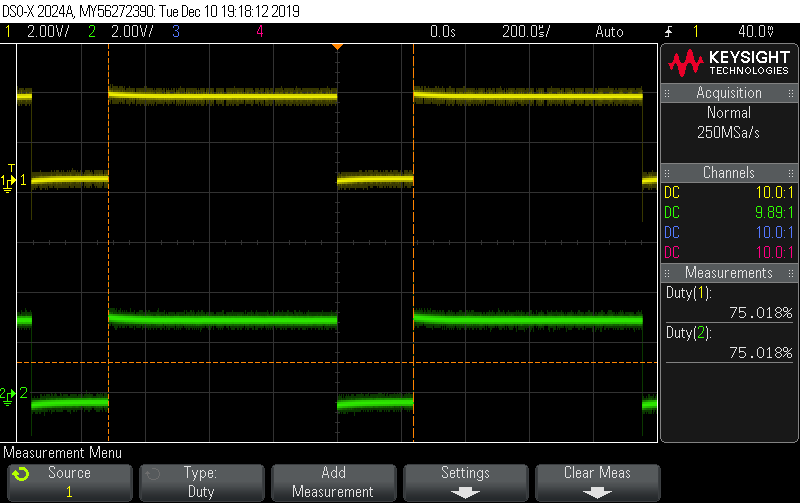Part Number: CC1310
I implemented a code to exchange interrupts between two devices like this:
DEVICE 1 I press the button0 and the DEVICE 2 answers me with LED0 on.
Now to this code, I am implementing pin_Shutdown to have a very low consumption after I send it to the command. For the moment I have declared a button that I don't use and the shutdown works.
Can I use the buttons I use to send the command and then send it to shutdown?
I implemented this, but I have problems:
The device sends the command but does not go into shutdown.
PIN_Config ledPinTable[] =
{
LED_1 | PIN_GPIO_OUTPUT_EN | PIN_GPIO_LOW | PIN_PUSHPULL | PIN_DRVSTR_MAX,
LED_2 | PIN_GPIO_OUTPUT_EN | PIN_GPIO_LOW | PIN_PUSHPULL | PIN_DRVSTR_MAX,
BUTTON_0 | PIN_INPUT_EN | PIN_PULLUP | PIN_IRQ_NEGEDGE,
PIN_TERMINATE
};
PIN_Config ButtonTableWakeUp[] = {
BUTTON_0 | PIN_INPUT_EN | PIN_PULLUP | PINCC26XX_WAKEUP_NEGEDGE,
PIN_TERMINATE /* Terminate list */
};
/* Shutdown Button pin table */
PIN_Config ButtonTableShutdown[] = {
BUTTON_0| PIN_INPUT_EN | PIN_PULLUP | PIN_IRQ_NEGEDGE,
PIN_TERMINATE /* Terminate list */
};
static void buttonClockCb(UArg arg) {
PIN_Handle buttonHandle = (PIN_State *) arg;
Clock_stop(hButtonClock);
if (activeButtonPinId != PIN_TERMINATE) {
if (!PIN_getInputValue(activeButtonPinId)) {
switch (activeButtonPinId) {
case BUTTON_0:
Semaphore_post(Semaphore_handle(&shutdownSem));
break;
default:
break;
}
}
}
PIN_setConfig(buttonHandle, PIN_BM_IRQ, activeButtonPinId | PIN_IRQ_NEGEDGE);
activeButtonPinId = PIN_TERMINATE;
}
static void buttonCb(PIN_Handle handle, PIN_Id pinId) {
activeButtonPinId = pinId;
PIN_setConfig(handle, PIN_BM_IRQ, activeButtonPinId | PIN_IRQ_DIS);
Clock_setTimeout(hButtonClock, (50 * (1000 / Clock_tickPeriod)));
Clock_start(hButtonClock);
}
static void taskFxn(UArg a0, UArg a1)
{
Semaphore_pend(Semaphore_handle(&shutdownSem), BIOS_WAIT_FOREVER);
PINCC26XX_setWakeup(ButtonTableWakeUp);
Semaphore_pend(semHandle, BIOS_WAIT_FOREVER);
Power_shutdown(0, 0);
while (1);
}
void Send_Button_Command(PIN_Handle handle, PIN_Id pinId)
{
CPUdelay(8000*50);
if (!PIN_getInputValue(pinId))
{
switch(pinId){
case BUTTON_0:
//SEND COMMAND TO TURN ON LED 1 ON SECOND DEVICE
Semaphore_post(semHandle);
break;
}
}
}Thanks

